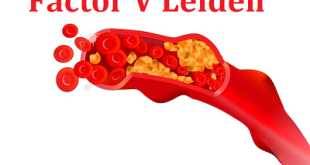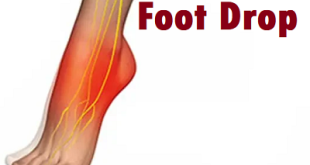Definition
Flatulence is the expulsion of gas from the gastrointestinal tract through the rectum. Daily, the average person produces one to four pints of gas and expels it up to 14 times. Although flatulence can cause embarrassment to some people, it is a natural occurrence.
Eating certain foods or drinking carbonated beverages can introduce air into the stomach and increase flatulence. You may also swallow air when you eat too quickly or when you chew gum. Because infants frequently swallow air when feeding, they may have flatulence after they have been fed. The act of burping an infant helps relieve the discomfort caused by swallowed air.
Flatulence is also caused by the passage of undigested food from the small intestine to the large intestine. Bacteria in the large intestine process the food and produce harmless gases, such as carbon dioxide, hydrogen, and methane, which are released as gas through the rectum. Certain foods, including carbohydrates, fiber and sugars, are more likely than other foods to produce gas.
Components of the flatus
The flatus is mainly composed of nitrogen, hydrogen and carbon dioxide. The carbon dioxide content is higher among people who drink carbonated beverages regularly. The flatulence is usually only foul smelling when it contains gases that smell such as sulphur, although it is normal for the flatus to smell a bit.
Mechanism of flatulence
Sensory nerve endings present in the rectum and anal canal can detect pressure exerted by the bulk of a stool. As this pressure mounts, a person feels the urgency to pass the stool. The flatus that gathers in the lower intestine and colon also exerts pressure and triggers a need to pass wind.
Flatulence often makes a sound, as the flatus passes through the tight anal sphincter. The speed the gas is passed at, the tightness of the sphincter and other factors such as water and body fat content, determine the type and pitch of the sound. Flatulence can occur accidentally when pressure within the abdomen is suddenly raised due to coughing, sneezing, sexual intercourse or laughing, for example.
Causes of flatulence
Intestinal gas is a normal part of digestion. The gas is produced by different means, including:
Swallowed air – the mouth isn’t vacuum-sealed, so small quantities of air are swallowed along with food and liquid. The oxygen and nitrogen from the swallowed air is absorbed into the bloodstream from the small intestine, and any excess is allowed to continue its journey through the bowel for expulsion. ‘Air-swallowing’ often occurs in people who are anxious.
Normal digestion – stomach acid is neutralised by pancreatic secretions, and the resulting interaction creates gas (carbon dioxide) as a by-product.
Intestinal bacteria – the bowel contains a host of bacteria that help digestion by fermenting some of the food components. The process of fermentation produces gas as a by-product. Some of the gas is absorbed into the bloodstream and breathed out by the lungs. The remainder is pushed along the bowel.
High fibre foods – fibre is essential to the health of the digestive system, but it can create excessive gas. The small intestine can’t break down certain compounds, which means extra work for the gas-producing intestinal bacteria, and accompanying flatus. High-fibre diets should be introduced slowly to allow the bowel sufficient time to adjust.
Lactose intolerance – the body’s inability to digest the particular sugars found in cows milk will produce excessive amounts of intestinal gas. This is because the bacteria of the gut digest the sugars by fermentation, a gas-creating process.
Intolerance of short-chain carbohydrates other than lactose – certain people may be susceptible to gas production from fermentation of other carbohydrates such as fructose, present in many foods including honey, corn syrup and some fruits. These short-chain carbohydrates together are now known as FODMAPS.
Risk factors for excessive flatulence
As mentioned above, excessive air swallowing, and certain foods and carbonated beverages are significant contributors to belching and flatulence. Some patients with Irritable Bowel Syndrome (IBS) appear to be uniquely sensitive to normal or only slightly increased volumes of intestinal gas and may develop abdominal cramps as a result.
Patients with altered anatomy due to surgery or those with certain rheumatologic diseases may be at an increased risk of bacterial overgrowth in the small intestine which can lead to belching, bloating or flatulence.
Some patients, particularly women who have had one or more pregnancies, experience abdominal distension when standing erect. This is often assumed to be gas accumulation. However, if the distension is not present when the patient is lying “flat”, then the likely explanation is weak abdominal muscles (which extend from the lower rib cage to the pelvis on both sides of the umbilicus) due to the stretching and loss of muscle tone which occurs during pregnancy.
What are the symptoms of flatulence?
There are usually no symptoms when flatulence is at a normal level. You might not even notice when you pass wind for much of the time. But if you have excessive flatulence, you might:
- Break wind more often
- Have pain, bloating or rumbling in the abdomen
- Notice that your farts are loud and smelly
What are the complications associated with Flatulence?
- There are no long-term consequences for not treating flatulence. If the flatulence is due to a food intolerance or digestive issue, the problem may get worse. Other symptoms may also develop.
- In some cases, prolonged excessive flatulence can lead to other issues, such as social discomfort and changes in eating habits. If it affects your lifestyle a lot, it may also affect your mood.
- It’s important to maintain a healthy diet and to see your doctor if the problem begins to negatively affect your life.
Diagnosis and test of flatulence
Your doctor will first evaluate all of your other symptoms, medical history, and risk factors for other conditions, and give you a physical exam.
Tests to Diagnose Gas
If dietary changes or treatments don’t work, the next step is for your doctor to order some tests to determine a gas diagnosis. Tests can help identify causes like irritable bowel syndrome (IBS), bacterial overgrowth in the intestines, or a blockage somewhere in the digestive tract, according to Marrero.
Once your doctor has narrowed down the possible causes of your excessive gas by reviewing your symptoms and medical history, he may run any or several of these tests to take a look at what’s going on in your digestive tract:
Imaging tests. Marrero says that a series of imaging tests, including a CT (computed tomography) scan of your abdomen, are among the first procedures doctors will run to diagnose the cause of gas pain. An MRI (magnetic resonance imaging) or an ultrasound may also be used to spot problems in the digestive tract.
Contrast X-rays. Barium may be used (swallowed or inserted in the rectum) to help any abnormalities in the digestive tract show up better on X-ray images.
Endoscopy. This can include a colonoscopy, sigmoidoscopy, or upper endoscopy. All of these tests use a tube with a camera on the end of it to look for abnormalities. A scope that goes into the rectum examines the colon; to view the upper part of the digestive tract, it is inserted through your mouth and down your esophagus to your stomach.
Blood tests. Your doctor will draw a blood sample and run a number of tests to look for any infection or an indication of another health problem to see if that’s what’s causing your gas.
Breathe test. A breath test may be given if your doctor suspects that you might be lactose-intolerant. After drinking a solution that contains glucose, the amount of hydrogen in your breath will be measured — too much indicates lactose intolerance.
What is the treatment for excessive flatulence or gas?
The goal of treatment of flatulence is to reduce gas and smelly odor. Medical intervention includes treatment with antibiotics if bacterial overgrowth of the GI tract is suspected or evidence of parasitic infection is seen.
Some promising studies have investigated feeding non-offensive strains of bacteria (using probiotics) to push out the bacteria that are offensive, although no established treatments are available at this time.
Regulation of bowel function is essential. Constipation should be treated with increased dietary fiber or certain laxatives.
In cases where anxiety causes the person to swallow air, the doctor may suggest the person seek mental health counseling to change habit patterns.
What OTC or prescription medicine treat excessive flatulence or gas?
If the person does not want to avoid the foods that cause gas, many nonprescription over-the-counter (OTC) medicines are available to help reduce symptoms.
Beano is an enzyme supplement that may be useful with bean ingestion. It contains the sugar-digesting enzyme that the body lacks to digest the sugar in beans and many vegetables. Beano has no effect on gas caused by lactose or fiber. Beano can be purchased over-the-counter. Add 3-10 drops per serving just before eating beans and vegetables to break down the gas-producing sugars during digestion.
Antacids, such as Mylanta II, Maalox II, and Di-Gel, contain simethicone (also termed an anti-gas pill or gas pill), a foaming agent that joins gas bubbles in the stomach so that gas is more easily belched away. However, these medicines have no effect on intestinal gas. These can be taken before meals. Dosage varies.
Activated charcoal tablets (Charcocaps) may provide relief from gas in the colon. Gas can be reduced if tablets are taken before and after a meal. The usual dose is 2-4 tablets taken just before eating and one hour after meals.
Certain prescription medicines may help reduce symptoms, especially if you have a disorder such as irritable bowel syndrome. Some medicines such as metoclopramide (Reglan) have also been shown to decrease gas complaints by increasing gut activity.
Prevention
You often can prevent flatulence by modifying you’re eating habits and diet:
- Eat and drink slowly, in a calm environment. Chew your food thoroughly before you swallow.
- For a few days, avoid the foods that most commonly cause flatulence, such as beans, high-fiber foods, cruciferous vegetables, carbonated beverages and sugar-free products containing sorbitol. Then gradually add them to your diet again, one by one, while keeping track of your symptoms. This should let you determine which foods trigger flatulence for you. Then you can avoid them.
- If you need to add more fiber to your diet, increase your fiber slowly over a period of days or weeks. A sudden increase in dietary fiber often triggers flatulence, but a gradual increase may not.
- If you eat beans, try a nonprescription product, such as Beano, containing enzymes that break up the poorly digested sugars found in beans.
 Diseases Treatments Dictionary This is complete solution to read all diseases treatments Which covers Prevention, Causes, Symptoms, Medical Terms, Drugs, Prescription, Natural Remedies with cures and Treatments. Most of the common diseases were listed in names, split with categories.
Diseases Treatments Dictionary This is complete solution to read all diseases treatments Which covers Prevention, Causes, Symptoms, Medical Terms, Drugs, Prescription, Natural Remedies with cures and Treatments. Most of the common diseases were listed in names, split with categories.







